Health Care & Life Sciences Sector
Top Trends for 2023
PREPARED BY THE FOLEY & LARDNER TEAM IN THE AREA OF: HEALTH CARE & LIFE SCIENCES


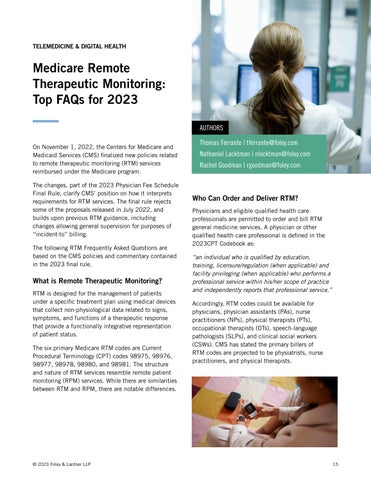
PREPARED BY THE FOLEY & LARDNER TEAM IN THE AREA OF: HEALTH CARE & LIFE SCIENCES



Foley is primed to strategically advise health care and life sciences companies through every step of their journey and all stages of their lifecycle. Companies in this space require experience and resources to navigate rapidly accelerating digital technologies and shifting regulatory and IP environments that complicate the development of new tests, treatments, and business models. We provide business and legal solutions so you remain competitive in a constantly evolving market.
Our more than 200 dedicated health care and life sciences attorneys in 25 offices across the country help our clients grow, empowering their business strategies and operating models to position them for success today and in the future. We recognize that speed matters in this evolving space where new legal challenges emerge daily. Foley excels at marshaling rapid-response teams to address clients’ needs quickly. Whether reacting to a data breach or facing a government investigation, we organize teams swiftly from offices across the United States to create tailored solutions that address your most pressing issues.
Foley is the preeminent law firm for telemedicine and digital health, health care providers and payors, academic medical centers, entrepreneurs, pharmaceutical and biotechnology firms, laboratories, clinical research organizations, behavioral health and home health providers, and investors in the industry. We offer the full scope of legal services and provide turnkey solutions that bring to the table deep knowledge and experience in all facets of transactions, regulatory and compliance, data intelligence, IP, privacy and cybersecurity, and licensing and collaborating agreements. With deep regulatory experience coupled with a national transaction backbone, Foley delivers a one-stop solution for companies and investors. We have decades of in-house experience at health care providers and vendors, pharmaceutical and biotechnology firms, as well as key state and federal government agencies. Our lawyers have been deeply immersed in these industries, acquiring substantial technical and scientific knowledge through graduate degrees and ongoing training that enables us to provide forward-looking, practical solutions.
Susan Pravda Chair spravda@foley.com 617.342.4003
The convergence of wearable technology and artificial intelligence systems are generating a new wave of products that raise novel regulatory, business, and intellectual property considerations. If you are developing a digital health or software product, it may contain software functions that are considered “devices”, as that term is defined in section 201(h) of the Federal Food, Drug, and Cosmetic (FD&C) Act and are subject to US. Food and Drug Administration (FDA) oversight as devices.
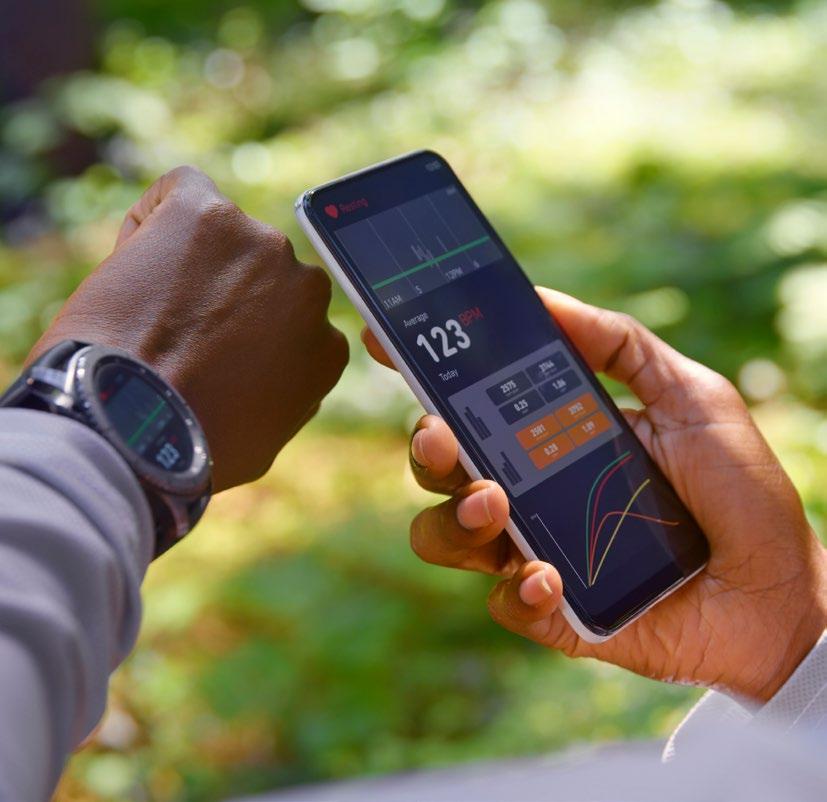
To assist in this evaluation process, the FDA has developed a useful tool, the Digital Health Policy Navigator, which can help guide companies through the evaluation process to determine whether new products or services they may be offering in the digital health space are subject to FDA regulations for devices. While this navigation tool should not be used in place of FDA counsel to make a determination of whether a product or service is covered, it can be helpful for companies that are evaluating new offerings to help illuminate which portions of FDA regulations are likely to be applicable (or whether none are applicable). The preliminary feedback this navigation tool provides can then be further reviewed with FDA counsel.
AUTHORS
Nathan Beaver | nbeaver@foley.com Stephen Maebius | smaebius@foley.comThe navigation tool includes seven questions:
STEP 1
Is the software function intended for a medical purpose?
STEP 2
Is the software function intended for administrative support of a health care facility?
STEP 3
Is the software function intended for maintaining or encouraging a healthy lifestyle?
STEP 4
Is the software function intended to serve as electronic patient records?
STEP 5
Is the software function intended for transferring, storing, converting formats, or displaying data and results?
STEP 6
Is the software function intended to provide clinical decision support?
STEP 7
Does the Device Software Functions and Mobile Medical Applications Guidance apply?

Based on the answers to these seven questions, the navigation tool will then display one of the following outcomes:
LlKELY NOT A DEVICE
LIKELY FDA INTENDS TO EXERCISE ENFORCEMENT DISCRETION
Device requirements do not apply if the software function is not a device.
Some software functions may meet the definition of a device, but because they pose a lower risk, the software function may fall within FDA’s enforcement discretion policy (meaning that the FDA does not intend to enforce applicable requirements under the FD&C Act at this time).
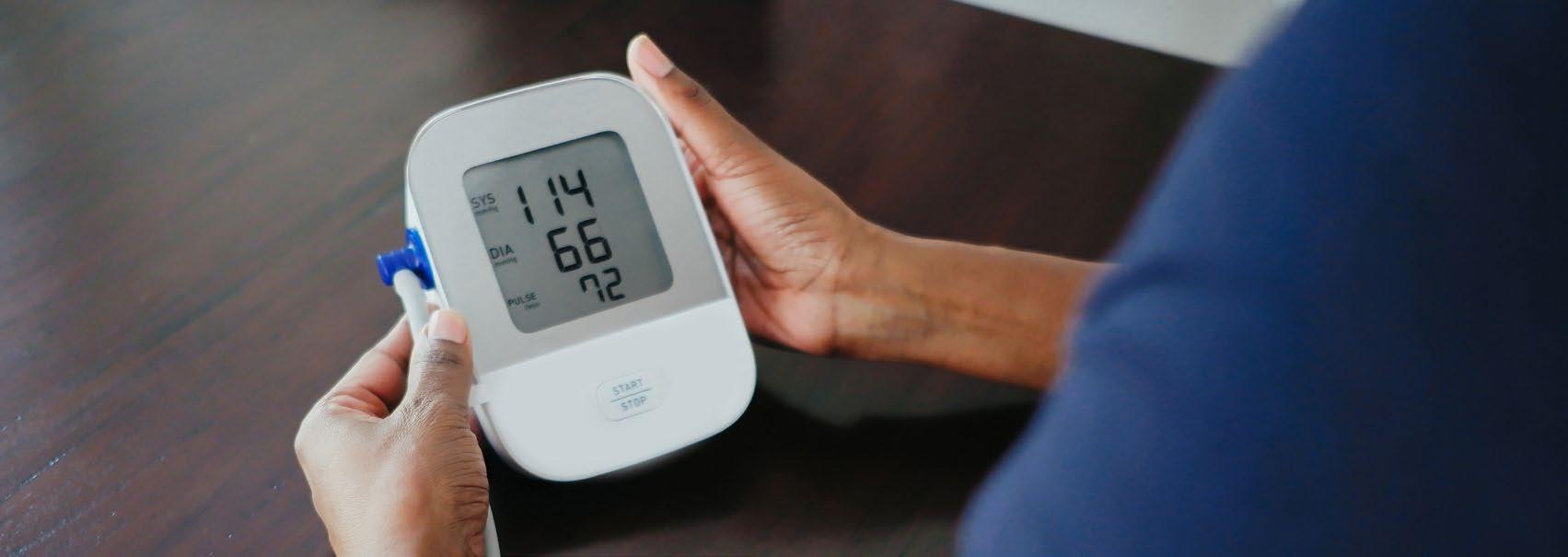
While the navigation tool has its limitations, it identifies and raises key questions stemming from a number of digital health guidances, including General Wellness: Policy for Low Risk Devices; Medical Device Data Systems, Medical Image Storage Devices, and Medical Image Communications Devices; Clinical Decision Support Software; and the Policy for Device Software Functions and Mobile Medical Applications. The tool shows that the FDA is also trying to “innovate” in the area and provide new resources for companies navigating this space.
LIKELY THE FOCUS OF FDA’S REGULATORY OVERSIGHT
The software function is a device and its functionality could pose a risk to a patient’s safety if the device were to not function as intended. Devices may be subject to requirements such as premarket authorization (e.g., premarket notification (section 510(k) of the FD&C Act), De Novo (section 513(f) (3) of the FD&C Act), premarket approval (section 515 of the FD&C Act)), adverse event reporting (section 519 of the FD&C Act), among others.
Your product may be a device. Go to Step#.
More information is needed to identify the relevant policies. Go to the next Step.
Understanding the regulatory pathway can also provide opportunities for coordinating patent exclusivity and regulatory exclusivity. For example, some digital health products may be eligible to receive data exclusivity from the FDA, and if they are paired with a traditional therapeutic, then certain kinds of patents may also be listable in the FDA’s Orange Book. An integrated approach with combined input from regulatory and IP counsel can be helpful to leverage all available types of protection.
Congress recently introduced a bill that could expand access to therapeutic psychedelics that are designated as Breakthrough Therapies. These products are potentially useful in treating addiction, depression, post-traumatic stress disorder (PTSD), and other neurologic diseases. In recognition of the need to fulfill research and development requirements of certain Schedule I psychedelics, the Drug Enforcement Agency (DEA) also significantly increased the production quota in the manufacturing of N,N-Dimethyltryptamine (DMT), 3,4-methylenedioxymethamphetamine (MDMA), lysergic acid diethylamide (LSD), and other drugs. These actions are exemplary of the federal government’s shift in its approach to the therapeutic value of psychedelic substances.
On November 17, 2022, U.S. Senators Cory Booker (D-N.J.) and Rand Paul (R-KY) introduced the Breakthrough Therapies Act, a bipartisan bill that, if passed, would permit the DEA to reclassify a Schedule I drug — defined by the DEA as a drug with “no currently accepted medical use and a high potential for abuse” — that receives a Breakthrough Therapy Designation from the Food and Drug Administration (FDA) to a Schedule II drug under the federal Controlled Substances Act (CSA). Currently, psychedelics such as LSD, MDMA, psilocybin, and others, are classified as Schedule I substances.
Under the FDA’s expedited drug development initiatives, a Breakthrough Therapy Designation affords a company the opportunity to have greater interaction with the FDA to expedite the development and review of drugs that are intended to treat a serious condition and clinical evidence indicates that the drug may demonstrate substantial improvement over available
Lauren Carboni | lcarboni@foley.com
Devaki Patel | dpatel@foley.com
David Rosen | drosen@foley.com
therapy on a clinically significant endpoint(s).”
To date, the FDA has designated two Schedule I psychedelics as Breakthrough Therapies: (i) psilocybinassisted therapy to treat severe treatment-resistant depression and major depressive order (ii) MDMAassisted therapy to treat moderate to severe PTSD.
In a press release, Senator Booker stated the law “could help facilitate a phased roll-out of these potentially lifesaving therapies via FDA-approved Expanded Access pilot programs” and it “would remove burdensome federal regulations that impede research and development of drugs that may be inappropriately listed in Schedule I.”
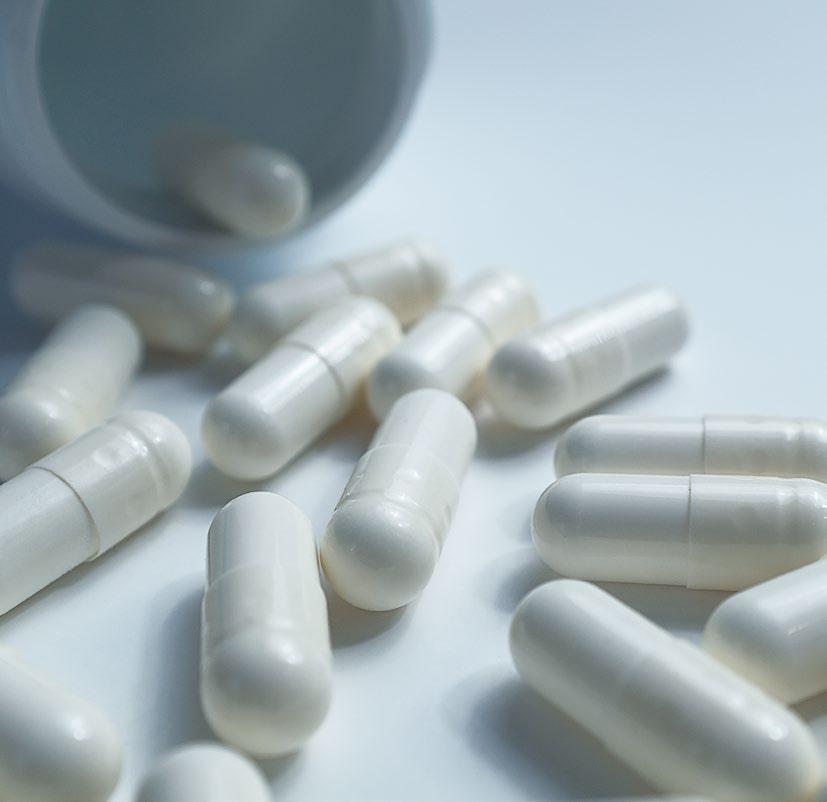
It amends the CSA to create an administrative process by which current Schedule I drugs that are deemed “breakthrough therapies” by the FDA or qualify for a waiver under the federal Food, Drug, and Cosmetic Act (FD&C Act) can be reclassified as a Schedule II drug – defined as drugs with “currently accepted medical use with severe restrictions.”
Researchers with existing Schedule I or II research registrations with DEA can conduct studies involving Schedule I drugs 30 days after sending a notice to the Attorney General containing required
information about their research, including the chemical name of the substance and the quantity of the substance to be used in the research.
Researchers without a current Schedule I or II research registrations with DEA can send a notice to the Attorney General containing the required information about their research in which the Attorney General would treat such notice as a sufficient application for a research registration. In this case, the Attorney General would have to render a decision within 45 days of receiving the notice.
The Breakthrough Therapies Act was referred to the Senate Judiciary Committee. No further actions have occurred, but we will continue to monitor the bill’s progress. Notably, the bill was introduced around the same time as Congress’s announcement of the bipartisan Congressional Psychedelics Advancing Clinical Treatments (PACT) Caucus, which will focus on exploring psychedelic research to alleviate the U.S. mental health crisis.
The DEA substantially increased the 2023 aggregate production quotas (APQ) for certain psychedelics to be used in research. This signifies an increased demand for federal research and clinical trials on the therapeutic use of psychedelics. In the December 2, 2022 final rule, the DEA significantly increased the manufacturing APQs for MDMA, psilocin (a psychedelic substance found in psilocybin mushrooms), 5-Methoxy-N,N-dimethyltyptamine (5-MeO-DMT), methylenedioxyamphetamine (MDA), and LSD as follows:
Notably, the APQ for psilocybin remains the same as the 2022 quota, at 8,000 grams.

In responding to commenters requesting the DEA consider increasing APQs for certain Schedule I psychedelics (i.e., 5-MEO-DMT, DMT, MDA, MDMA, 2-CB, psilocin, and psilocybin), the DEA responded that the APQs established in the final rule reflect DEA’s estimates of the medical, scientific, research, and industrial needs for 2023. However, such APQs can be adjusted if those needs change. For example, if DEA receives additional research protocols from
DEA-registered researchers or additional quota applications from DEA-registered manufacturers.
Lastly, the DEA welcomes further engagement with representatives from indigenous communities to determine APQs for controlled substances that are potentially derived from plants traditionally used by such communities in the U.S. and beyond. The DEA also stated that the APQs manufacturing quotas are informed, in part, by the quota requests submitted by DEA-registered manufacturers of those substances, and the current needs of indigenous communities may be reflected in the requests DEA has received. DEA’s position suggests there is a great opportunity to ensure the indigenous community, which has been using certain entheogen plants for centuries for therapeutic purposes, is a stakeholder in the future of the psychedelics industry. The recent resurgence of psychedelics, and its likely imminent commercialization, poses a real threat to the sustainability of plant-derived psychedelics and those communities who are the keepers/utilizers of those plants. A failure to include the indigenous communities will likely have dire consequences on the psychedelic industry.
Based on these recent strides by the federal government, firms operating in the psychedelics drug market may experience less obstacles in the regulatory approval pathway for their psychedelic drug products in the coming years ahead. Notwithstanding, please remember that companies and investigators must still comply with significant regulatory requirements in order to obtain, secure, and conduct research on these potentially very beneficial psychedelic substances.

The presence of private equity (PE) investment has exploded in recent years in all areas of the health care sector. PE in health care is a good thing when done right: It can pave the way for much needed innovation, efficiency, and nontraditional care delivery models. However, government regulators, media journalists, some health care practitioners, and private parties are watching PE investment with growing suspicion that profit-driven goals may conflict with the quality of care for patients. Indeed, PE firms often do not have the luxury of long time horizons for their investments and often have investors that expect relatively quick financial returns. News outlets have added fuel to concerns by publishing reports alleging decreases in quality care when PE firms acquire health care businesses. Additionally, PE firms do not always appreciate the complex regulatory environment in which health care operates — an environment where a regulatory misstep can become a major fraud and abuse issue. That is drawing the focus of government enforcers. Meanwhile, PE investment is capturing the attention of antitrust regulators concerned about industry roll-ups and the lessening of competition.
The Biden Administration has made several pronouncements of its stance against what it calls Wall Street’s “takeover” of health care. In accordance with this policy, anti-fraud and abuse government enforcers are becoming increasingly hostile to PE. Enforcers are looking beyond target companies to include the companies that invest in and manage them. In the last three years, PE firms have paid millions of dollars to settle government allegations that they knew of the allegedly improper practices of companies they backed, including a PE firm that allegedly knew of a scheme to pay purported kickbacks to marketers; a PE firm that allegedly learned of a purported unlawful
Lori Rubin | larubin@foley.com
Michelle Freeman | mfreeman@foley.com
Samantha Robbins Jamali | sjamali@foley.com
scheme to submit false claims during due diligence of a company it invested in but did not put an end to the practice after investing; and a PE firm that held the majority of seats on the board of directors of a company that allegedly submitted claims for Medicaid reimbursement for unlicensed, unqualified, and inappropriately supervised patient care.
PE companies are also facing increased scrutiny by antitrust regulators. The Department of Justice’s (DOJ) Antitrust Division has identified as among its enforcement priorities the cumulative competitive impact of PE-backed roll-ups, particularly smaller transactions that do not require Hart-Scott-Rodino Act (HSR) reporting which may over time reduce competition; market distortions stemming from PE prioritizing short-term financial gains and cost cutting over innovation and quality; and interlocking directorates which violate Section 8 of the Clayton Act (Section 8 prohibits directors and officers from serving simultaneously on the boards of competing corporations subject to limited exceptions because of the potential for anti-competitive effects such as facilitating collusion – e.g. pricing fixing and market allocation). This prioritized targeting of PE by DOJ, coupled with escalating rhetoric from antitrust enforcement leadership at DOJ and the Federal Trade Commission (FTC), suggests increased investigations and enforcement actions are forthcoming. One area where we see these priorities in action is that DOJ
appears poised to proactively scrutinize interlocks as part of standalone investigations and enforcement actions (rather than only during merger or transaction reviews). DOJ can rely largely on publicly available information and filings to do so. In October 2022, DOJ announced the resignation of seven directors from the corporate boards of five companies after DOJ sent letters to multiple companies, including PE firms, expressing concerns that their board composition constituted unlawful interlocks in violation of Section 8 and warning that enforcement actions might be coming. While historically PE companies have not been the target of aggressive antitrust enforcement, they should be prepared for a different experience moving forward.
Private plaintiffs have gotten in on the action against PE firms as well, bringing lawsuits against PE-backed companies and their investors for violations of state corporate practice of medicine laws.
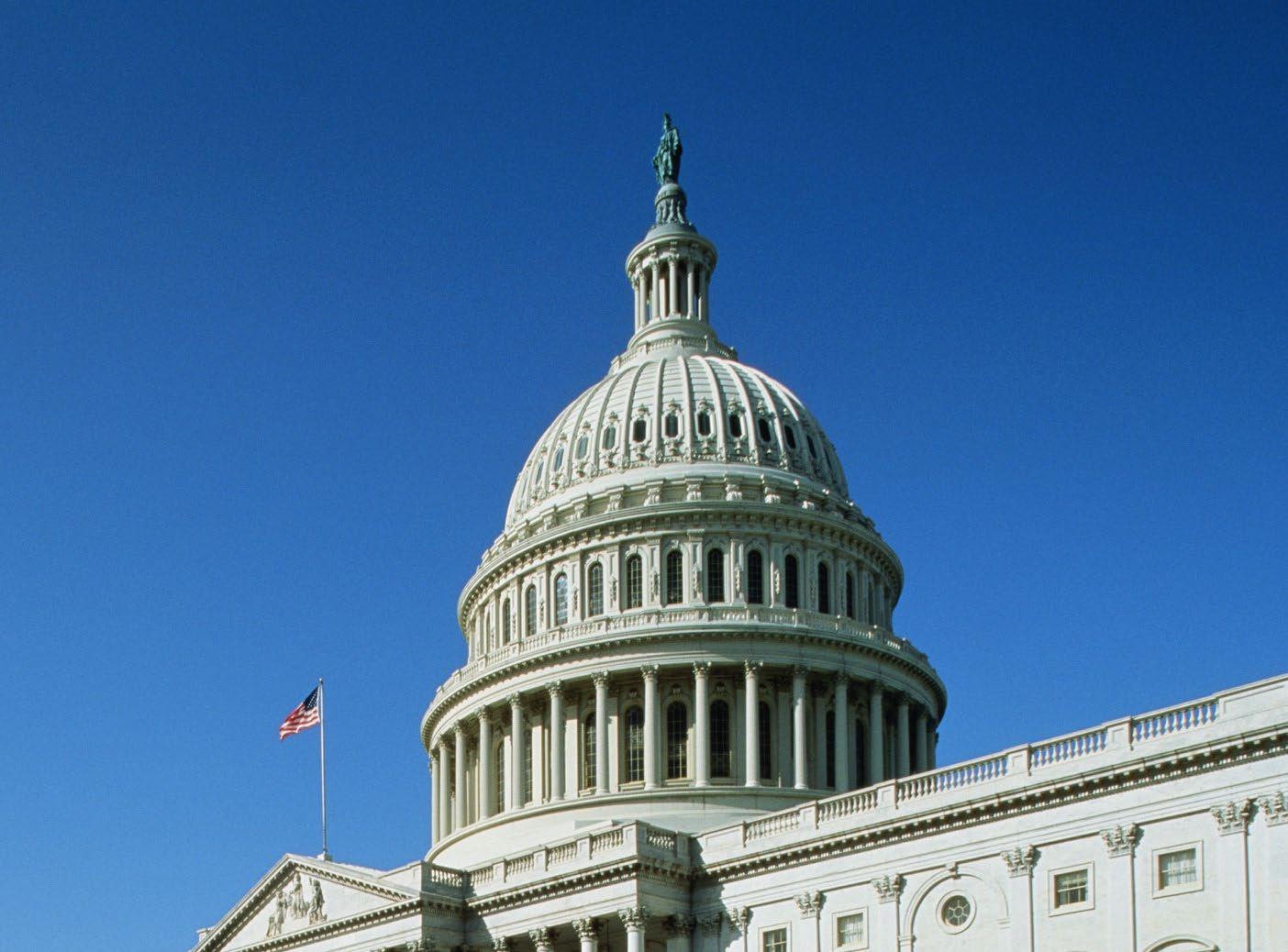
Corporate practice of medicine laws prohibit corporations from practicing medicine or otherwise exercising undue influence on physicians and their medical care choices.
Despite their laudable contributions to innovation, efficiency, and influx of cash investment into the health care sector, PE firms do not always get a good rap, and we anticipate the unflattering buzz surrounding PE in health care continuing in 2023. Well-intentioned investors may not always be aware of the regulatory hurdles facing health care companies; downstream consequences to patient care of certain practices; or the evolving priorities and concerns of enforcers. Investors should seek to appreciate the complex regulatory scheme, including fraud and abuse, antitrust, and corporate practice of medicine risks, and the priorities and philosophies of enforcers, so that they can take proactive steps to manage risk.
There was great speculation that the decreased valuations of 2022 would lead to a surge in M&A activity; however, activity has been much lower than anticipated. A multitude of factors have slowed down M&A — inflation, unrest abroad, and rising interest rates are just a few of the issues that have negatively impacted transactions.
We are left to wonder what the 2023 M&A forecast will look like. Will we see an uptick in activity, or will we continue to see a much more cautious approach from buyers and targets? There are many predictions, which vary widely. Below, we round up a few that are making headlines.
Many analysts are predicting we could see a return to pre-2021 activity. It is important to remember that 2021 was a blockbuster year for M&A with a historic number of transactions. That kind of activity is challenging to duplicate and exceed year after year. At some point, it will inevitably slow down. Therefore, we might be experiencing a return to a more normalized activity level as we move into 2023.
One area where there could be a spike in 2023 is mergers among private tech companies. In an interview with “The Information”, Goldman Sachs bankers told the outlet that consolidation among private tech firms could pick up next year. This could be particularly true for those startups who had to alter their IPO plans. These companies are likely exploring alternative exit strategies, and decreased valuations will make mergers in this space more attractive.
Louis Lehot | llehot@foley.com
Brandee Diamond | bdiamond@foley.com
Eric Chow | echow@foley.com
There is also some speculation that the fintech industry could see higher levels in 2023. This area has seen steep drops in valuations and a roller coaster of a year. These factors could make it a prime area for mergers and large transactions.
Ernst & Young is also predicting that an appetite for tech deals will return in 2023, citing a recent EY study that found “72% of tech CEO respondents plan to pursue M&A in the next 12 months, compared with 59% of CEO respondents across all industries.” Acquisition potential could be especially true for the more innovative technology startups as companies look to take advantage of lower valuations and expand into new, highly innovative areas.
There is also speculation that we could see an uptick in M&A activity in the energy sector as well, following the global issues that sector has faced in the past year. Larger energy producers could make a move to pursue deals with renewable energy companies as part of the increasing efforts to move toward alternative energy sources.
The health care sector could also be in for strong M&A activity next year, with PWC predicting a strong outlook for health services M&A deals in 2023, in part due to the increased transaction volumes and large levels of corporate cash in the industry.

Borrowing money is considerably more expensive due to multiple spikes in interest rates. Gone are the days of virtually free money. We have yet to determine what the Fed has in store, but we know that tightening should ease by mid-2023. That means it will be increasingly expensive to borrow moving forward but should level off before the second half of the year.
While the higher cost of taking on debt does make acquisitions more challenging, remember that private equity firms have an unprecedented amount of dry powder in their reserves. They can also use accruing, participating, and pay-in-kind dividends with a senior liquidation preference to structure around the interest. They will be looking to use their dry powder as valuations become more attractive. The combination of these factors has the potential to bolster activity.

One sure bet is that due diligence will continue to be a higher priority for buyers as they look more closely than ever into their targets. It is critically important for buyers to take an even deeper dive into every aspect of targets, ensuring everything is 100% in order. This means targets will need to be prepared on their end, with financials and operations ready to face greater scrutiny.
With the 2022 midterm elections counted, Republicans have taken back control of the House of Representatives, while the Democrats retain control of the Senate. Both chambers are held by extremely thin margins, which will boost the status of centrists in each party. The change in House majority gives Republicans control of key committees and allows for their legislative agenda to be negotiated on a larger stage, notably including plans from several committees to pursue oversight of the Biden Administration’s agenda and handling of the COVID-19 pandemic. The Biden administration is sure to respond to this by enacting more regulatory change and continued implementation of legislation enacted during the 117th Congress. Both parties will look for common ground to enact their agenda on high-profile concerns. These bipartisan priorities include health care reform, insulin affordability, cybersecurity, trade agreement reform, and clean energy initiatives. Read more below for what is anticipated to be taken up during the 118th Congress and Biden administration’s plans for 2023.
House Republicans have been working on creating a blueprint for their plans through several key reports released by the Healthy Future Task Force, chaired by Reps. Brett Guthrie (R-KY) and Vern Buchanan (R-FL). This task force was created by Republican Leader Kevin McCarthy (R-CA) in 2021 and is comprised of the Modernization, Treatment, Security, Doctor-Patient Relationship, and Affordability Subcommittees. The overall goals of the 17-member task force are to modernize the health care system to help lower costs, develop better therapies and cures, and provide Americans with more choices. Among other things, priority items for this group on behalf of House Republicans include an extension of telehealth payment coverage; prevention of cyberattacks against
Dennis Cardoza | dcardoza@foley.com
Jennifer Walsh | jwalsh@foley.com
Scott Klug | sklug@foley.com
William Ball | wball@foley.com
Jared Rifis | jrifis@foley.com
Kate Kros | kkros@foley.com
John West | jwest@foley.com
health care providers; expansion of Medicare device coverage; tech oversight and innovation; oversight of health agencies; and drug affordability for seniors. They are interested in holding hearings to question the Department of Health and Human Services (HHS) Secretary Xavier Becerra and Centers for Medicare and Medicaid Services (CMS) Administrator Chiquita Brooks-LaSure about drug price negotiation and other topics. Additionally, it is certain that investigations into the handling of the COVID-19 pandemic will be a key part of the House Republican’s investigatory agenda.
Potential sources of bipartisan cooperation for next year include Cures 2.0, mental health legislation, insulin affordability legislation, pharmacy benefit manager (PMB) reform, and telemedicine. The White House and HHS have also shown support for permanent extension of pandemic telehealth waivers, though it is unclear when the Public Health Emergency will end (likely to be renewed at least one more time).
The Biden administration will continue to implement the Inflation Reduction Act (IRA), including its tax credits and drug pricing implementation. The law represents a key portion of the Biden administration’s climate change agenda. Out of the $370 billion allocated to combat climate change, $269 billion will be implemented via the tax code. Currently, the Treasury Department is finalizing rules across various tax credits, including that of manufacturing clean energy.
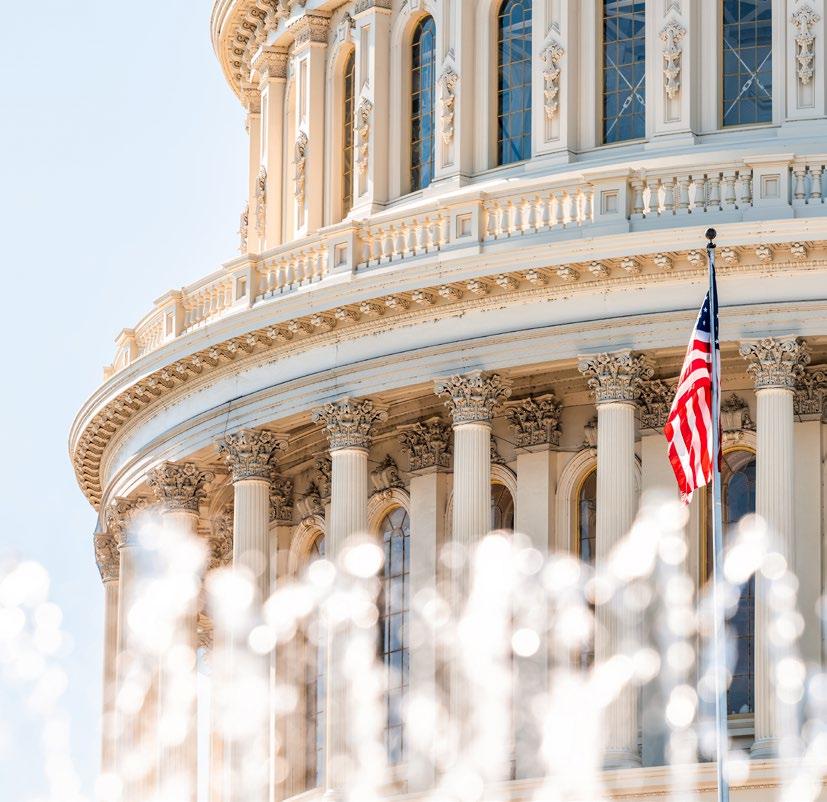
A key provision of the IRA was allowing Medicare to negotiate the costs of specific prescription drugs. Under the law, CMS is required to publish a list of the highest-ranked Medicare Part D drugs selected for negotiation by September 1, 2023. The Secretary of Health and Human Services will have the ability to select a list of 50 Medicare Part D pharmacy drugs and 50 Part B drugs administered via a physician’s office. CMS is currently staffing up to take on this task. The agency has stated that it plans to hire nearly 100 new experts to implement this provision of the law.
The Department of Energy will continue to enact portions of the Infrastructure Investment and Jobs Act, most notably its provisions related to hydrogen hubs. The program allocates $8 billion towards establishing six to 10 regional clean hydrogen hubs across the country, in an effort to ramp up the production of clean hydrogen and reach goals of net-zero greenhouse gas emissions in the power sector by 2035. Full applications for the program are due by April 2023; the DOE selection of hub sites is anticipated in fall 2023.
The National Institute of Standards and Technology (NIST), housed within the Department of Commerce, has begun requesting comments from key stakeholders on its implementation of the CHIPS Act of 2022. The key provisions revolve around incentives to ramp up domestic production of semiconductors. The legislation’s provisions on research and development, in addition to workforce development, have been the main focal points in the Department of Commerce’s implementation of the law. Semiconductor production has been a focus of the Biden administration as it continues to work to ramp up domestic production and reduce foreign dependence in the emerging technologies sector. The Biden administration has looked to increase domestic competitiveness with

foreign economic adversaries, including China, through export controls and the implementation of its EV tax credit limitations. The administration will likely continue this trend through 2023.
The Departments of Health and Human Services, Labor, and the Treasury will also continue to implement drug pricing provisions from the No Surprises Act.
A key piece of the Republican agenda during their control of the 115th Congress from 2017-2019 was the Tax Cuts and Jobs Act (TCJA). Since Democrats takeover of the House in the 2018 midterm elections and subsequent wins of the Senate and White House in 2020, they have sought to change the tax code set forth by the Trump administration. In the waning days of the Democrat trifecta of the House, Senate, and White House, there have been reports that they may negotiate with Republicans to codify portions of the TCJA for extensions of their agenda. Notably, Democrats could offer to codify a reform to the Research and Development tax credit in exchange for an extension of the Child Tax Credit. These tax extenders would be taken up in the lame duck session during which Congress will debate FY 2023 appropriations.
Additional tax priorities for Republicans include extending various pieces of the TCJA, including that of doubling the standard deduction, reducing the top tax rates, and codifying pass-through deductions. A divided government offers Republicans chances to push their tax agenda in exchange for concessions from the Biden administration and congressional Democrats. Democrats took a similar approach during the Trump administration to push through legislation on expanding paid leave for federal workers.
On the trade front, there is bipartisan support building between the Biden administration and congressional Republicans on revamping trade policy toward more free-trade agreements. Outgoing Ways & Means Ranking Member Kevin Brady (R-TX) recently told Politico that he hopes to see the Biden administration push toward more free trade agreements that model the bipartisan U.S.-Mexico-Canada Agreement (UMCA) enacted under the Trump administration. Both parties pointed toward foreign economic adversaries in their campaigns and could push for more liberal trade agreements. This comes as the U.S. continues to negotiate with the European Union, in addition to South Korea, regarding restrictions to EV tax incentives passed under the Inflation Reduction Act in August.
Republicans have indicated support for the U.S. to reenter the Trans-Pacific Partnership. President Biden has already proposed the Indo-Pacific Economic Framework (IPEF), which includes provisions to increase clean energy production and upgrade infrastructure; however, it does not include a uniform lowering of tariffs. The 14 member states of the IPEF are in the process of negotiating the agreement. Republicans have criticized the IPEF as being a strong opportunity to open markets for American-made products, but that it does not go far enough in its provisions regarding digital and agricultural trade.
Republicans have also expressed interest in increased oversight of the Biden administration’s implementation of the IRA, specifically the $370 billion in clean energy provisions. Of the $370 billion allocated to combat climate change, $269 billion will be implemented via tax credits. There has not been much appetite to repeal the tax credits outlined within the law. Rather, Republicans may look toward more bipartisan solutions, such as increasing critical mineral production within the United States.

On November 1, 2022, the Centers for Medicare and Medicaid Services (CMS) finalized new policies related to remote therapeutic monitoring (RTM) services reimbursed under the Medicare program.
The changes, part of the 2023 Physician Fee Schedule Final Rule, clarify CMS’ position on how it interprets requirements for RTM services. The final rule rejects some of the proposals released in July 2022, and builds upon previous RTM guidance, including changes allowing general supervision for purposes of “incident-to” billing.

The following RTM Frequently Asked Questions are based on the CMS policies and commentary contained in the 2023 final rule.

RTM is designed for the management of patients under a specific treatment plan using medical devices that collect non-physiological data related to signs, symptoms, and functions of a therapeutic response that provide a functionally integrative representation of patient status.
The six primary Medicare RTM codes are Current Procedural Terminology (CPT) codes 98975, 98976, 98977, 98978, 98980, and 98981. The structure and nature of RTM services resemble remote patient monitoring (RPM) services. While there are similarities between RTM and RPM, there are notable differences.
Thomas Ferrante | tferrante@foley.com
Nathaniel Lacktman | nlacktman@foley.com
Rachel Goodman | rgoodman@foley.com
Physicians and eligible qualified health care professionals are permitted to order and bill RTM general medicine services. A physician or other qualified health care professional is defined in the 2023CPT Codebook as:
“an individual who is qualified by education, training, licensure/regulation (when applicable) and facility privileging (when applicable) who performs a professional service within his/her scope of practice and independently reports that professional service.”
Accordingly, RTM codes could be available for physicians, physician assistants (PAs), nurse practitioners (NPs), physical therapists (PTs), occupational therapists (OTs), speech-language pathologists (SLPs), and clinical social workers (CSWs). CMS has stated the primary billers of RTM codes are projected to be physiatrists, nurse practitioners, and physical therapists.
Yes, beginning January 1, 2023, physicians and certain non-physician practitioners (e.g., PAs and NPs) may bill for services furnished by clinical staff under general supervision, provided that the other requirements for “incident to” services are met. However, for other qualified health care practitioners (e.g., CSWs, CRNAs, PTs, OTs, SLPs), RTM services must be personally furnished by the billing qualified health care practitioner or, in the case of a PT or OT, by a therapy assistant under the PT’s or OT’s supervision.
The two RTM treatment management codes (CPT codes 98980 and 98981) were initially created under the “General Medicine” category, not the “E/M Services” category. Accordingly, a practitioner could not order and bill for RTM services while having remote-based clinical staff perform the work under general supervision.
In an attempt to address these supervising and billing limitations, in the July 2022 proposed rule, CMS proposed to replace CPT codes 98980 and 98981 with four new specific Healthcare Common Procedure Coding System (HCPCS) G-codes to expressly permit general supervision of auxiliary personnel by physicians and non-physician practitioners while also allowing certain other qualified health care professionals to furnish RTM services directly. However, after reviewing the public comments, CMS acknowledged that “confusion remains about how the new G-codes, if finalized, would or would not possibly create a chilling effect on the availability of RTM services.” Consequently, CMS decided to scrap the proposed G-codes and instead elected to modify its supervision policy for services furnished “incident to,” allowing general supervision for CPT codes 98980 and 98981.
This general supervision is consistent with what CMS has done in the past for certain designated care management services. In the Final Rule, CMS stated, “Any RTM service may be furnished under general supervision requirement.”
In 2023, practitioners eligible to bill Medicare “incident to” (e.g., physicians, NPs, PAs) will be able to do so for CPT 98980 and 98981 under general supervision. However, “incident to” billing typically is not part of the Medicare benefit for other qualified healthcare practitioners (e.g., PTs, OTs, SLPs), with limited exceptions. Such practitioners will not be able to leverage clinical staff under general supervision when furnishing the RTM services, meaning their RTM services must be personally furnished by the billing qualified health care practitioner or, in the case of a PT or OT, by a therapy assistant under the PT’s or OT’s supervision.
CPT code 98980 requires a minimum of 20 minutes of time in a month dedicated to RTM treatment management of the patient. This time must also include at least one interactive communication with the patient during the month (i.e., via phone or video).
CPT code 98981 has the same requirements as CPT code 98980, except it is used for additional 20 minutes per month, as an add-on code.
Yes, RTM is designed for the management of patients using medical devices that collect non-physiological data. Data around indicators such as therapy/ medication adherence, therapy/medication response,
and pain level can be collected and billed under the RTM codes. Under these codes, CMS recognizes “therapeutic” data—not just “physiologic” data—as an important category of patient information that can be assessed remotely. Whatever the data monitored, all RTM services must be reasonable and necessary in order to meet Medicare’s minimum billing eligibility, so the clinical use case and why the patient is being monitored is important to consider.
Yes, the clinical use cases eligible for device supply reimbursement under RTM are limited. Namely, CPT 98976 is only for transmissions to monitor respiratory system, and CPT 98977 is only for transmissions to monitor musculoskeletal system.
In the 2023 final rule, CMS added a new code (CPT 98978) for transmissions to monitor cognitive behavioral therapy (CBT) and finalized its proposal to accept the American Medical Association’s recommendation to contractor price this CBT device code for 2023. Contractor priced status means the value and payment for CPT 98978 will be established at the discretion of each local Medicare Administrative Contractor (MAC) and could vary nationally. Practitioners will need to refer to their local MACs for specific coverage and billing guidelines of CPT 98978.
Despite requests from industry stakeholders for the development of a generic RTM device code, CMS declined to create one agnostic to the specific body system involved or therapy type the device monitors. Instead, CMS is seeking stakeholder comments to better understand the costs, data, and utilization of expanding to additional systems and conditions. Thus, in 2023, payment for RTM remains limited to services that support an episode of therapy where the clinical issue ties to musculoskeletal, respiratory, or cognitive behavioral therapy.
Yes, CMS stated the RTM data can be objective device-generated data or it can be subjective inputs reported by a patient.
RTM requires the use of a medical device as defined under the federal Food, Drug, and Cosmetics Act (i.e., not merely a wellness device).
Many advocates asked CMS to clarify the kinds of technology covered under CPT codes 98975, 98976, and 98977. Some commenters gave examples of the kinds of technology they believe these codes should cover, such as Software as a Medical Device (SaMD), use of artificial intelligence (AI), machine learning algorithms (ML), and other related evolving technologies. Unfortunately, CMS did not offer any specifics in the final rule on what technology qualifies, instead noting that its proposals do not include a specific RTM device list, nor specific examples of RTM devices that would be appropriate for use when furnishing RTM services.
CPT codes 98975, 98976, 98977, and 98978 require the RTM device to monitor at least 16 days of data per each 30-day period, in total.
Only one practitioner can bill CPT codes 98975, 98976, 98977, and 98978 during a 30-day period and only when at least 16 days of data have been collected on at least one medical device. “Even when multiple medical devices are provided to a patient,” CMS explained, “the services associated with all the medical devices can be billed by only one practitioner, only once per patient, per 30-day period, and only when at least 16 days of data have been collected.”
No, the RTM codes cannot be reported in combination with the RPM codes (e.g., CPT 99453, 99454, 99457, 99458). Additionally, when a more specific code is available to describe a service, the CPT Codebook dictates that the more specific code should be billed.

On November 1, 2022, the Centers for Medicare and Medicaid Services (CMS) released its final 2023 Medicare Physician Fee Schedule (PFS) rule. As finalized, some of the most significant telehealth policy changes include:
■ Discontinuing reimbursement of telephone (audioonly) evaluation and management (E/M) services;
■ Discontinuing the use of virtual direct supervision;
■ Five new permanent telehealth codes for prolonged E/M services and chronic pain management;
■ Postponing the effective date of the telemental health six-month rule until 151 days after the public health emergency (PHE) ends;
■ Extending coverage of the temporary telehealth codes until 151 days after the PHE ends;
■ Adding 54 codes to the Category 3 telehealth list and modifying their expiration to the later of the end of 2023 or 151 days after the PHE ends.
According to the September 2021 Medicare Telemedicine Snapshot, telehealth services have increased more than 30-fold since the start of the PHE and have been utilized by more than half of the Medicare population. Telehealth and other digital health modalities continue to increase in importance for Medicare populations and corresponding health care providers. Consequently, as the PHE continues to wind down and the telehealth waivers near their end, CMS continues to grapple with how to maintain appropriate access to telehealth services without hitting the “Telehealth Cliff.” Much of the changes in the PFS reflect this struggle and the challenge of postPHE re-imposition of the Social Security Act’s Section 1834(m) requirements for telehealth.
Rachel Goodman | rgoodman@foley.com
Nathaniel Lacktman | nlacktman@foley.com
Thomas Ferrante | tferrante@foley.com
Under PHE waivers, CMS allowed separate reimbursement of telephone (audio-only) E/M services (CPT codes 99441-99443), something embraced by many practitioners and patients, particularly patients in rural areas or without suitable broadband access, as well as patients with disparities in access to technology and in digital literacy.
Yet, audio-only was not universally embraced as a permanent covered service with separate reimbursement. In the final rule, CMS elected to discontinue such coverage post-PHE, and did not permanently add these services to the Medicare Telehealth Services List. With the exception of certain telemental health services, CMS stated two-way interactive audio-video telecommunications technology will continue to be the Medicare requirement for telehealth services following the PHE. This is because Section 1834(m)(2)(A) of the Social Security Act requires telehealth services be analogous to in-person care by being capable of serving as a substitute for the face-to-face encounter. CMS stated, “we believe that the statute requires that telehealth services be so analogous to in-person care such that the telehealth service is essentially a substitute for a face-to-face encounter.” As audio-only telephone is inherently non-face-to-face, CMS determined the modality fails to meet the statutory standard.
CMS also rejected a request from a commenter to create a third virtual check-in code with a crosswalk to CPT code 99443 for a longer virtual check-in than the existing G2012 (5-10 minutes) and G2252 (11-20 minutes) codes. CMS’ reasoning was that the virtual check-in codes are meant to be used to determine the need for care and as such, there is not a clear necessity for a longer virtual check-in code.
Therefore, 151 days after the PHE expires, with the exception of certain mental health telehealth services, audio-only telephone E/M services will revert to their pre-PHE “bundled” status under Medicare (i.e., covered but not separately payable, also known as “provider-liable”). Practitioners will no longer receive separate reimbursement for these services.
Under Medicare Part B, certain types of services (e.g., diagnostic tests, services incident to physicians’ or practitioners’ professional services) must be furnished under the direct supervision of a physician or practitioner. For Medicare purposes, direct supervision requires the supervising professional to be physically present in the same office suite as the supervisee,
and immediately available to furnish assistance and direction throughout the performance of the procedure. The supervising professional need not be present in the same room during the service, but the “immediate availability” requirement means inperson, physical - not virtual - availability.
Among the PHE waivers, CMS temporarily changed the direct supervision rules to allow the supervising professional to be remote and use real-time, interactive audio-video technology. That change did not require the professional’s real-time presence at, or live observation of, the service via interactive audio-video technology throughout the performance of the procedure. This change was temporary because CMS was concerned widespread direct supervision through virtual presence may not be safe for some clinical situations.
In the final rule, CMS rejected requests to make virtual direct supervision a permanent feature in Medicare. Therefore, virtual direct supervision will expire at the end of the calendar year in which the PHE ends. With the extension of the PHE through January 11, 2023, virtual direct supervision will be available through at least the end of 2023.

CMS rejected all stakeholder requests to permanently add codes to the Medicare Telehealth Services List. Following its standard evaluation process for such requests, CMS considered whether they met appropriate categories.
Category 1 services must be “similar to professional consultations, office visits, and/or office psychiatry services that are currently on the Medicare Telehealth Services List.” Category 2 services require “evidence of clinical benefit if provided as telehealth” and all necessary elements of the service must be able to be performed remotely. CMS rejected this year’s requests because none of the proposed services (e.g., therapy, electronic analysis of implanted neurostimulator pulse generator/transmitter, adaptive behavior treatment and behavior identification assessment codes) met the requirements of Category 1 or 2 services. Interested stakeholders should collect and submit better evidence to persuade CMS to add these codes on a Category 1 or 2 basis next year (submissions were due by February 10, 2023).
CMS itself proposed five new codes to be added to the Medicare Telehealth Services list on a permanent basis:
■ G0316 (Prolonged hospital inpatient or observation care evaluation and management service(s) beyond the total time for the primary service (when the primary service has been selected using time on the date of the primary service); each additional 15 minutes by the physician or qualified healthcare professional, with or without direct patient contact (list separately in addition to CPT codes 99223, 99233, and 99236 for hospital inpatient or observation care evaluation and management services).
■ G0317 (Prolonged nursing facility evaluation and management service(s) beyond the total time for the primary service (when the primary service has been selected using time on the date of the primary service); each additional 15 minutes by the physician or qualified healthcare professional, with or without direct patient contact (list separately in addition to CPT codes 99306, 99310 for nursing facility evaluation and management services).
■ G0318 (Prolonged home or residence evaluation and management service(s) beyond the total time for the primary service (when the primary service has been selected using time on the date of the primary service); each additional 15 minutes by the physician or qualified healthcare professional, with or without direct patient contact (list separately in addition to CPT codes 99345, 99350 for home or residence evaluation and management services).
■ G3002 (Chronic pain management and treatment, monthly bundle including, diagnosis; assessment and monitoring; administration of a validated pain rating scale or tool; the development, implementation, revision, and/or maintenance of a person-centered care plan that includes strengths, goals, clinical needs, and desired outcomes; overall treatment management; facilitation and coordination of any necessary behavioral health treatment; medication management; pain and health literacy counseling; any necessary chronic pain related crisis care; and ongoing communication and care coordination between relevant practitioners furnishing e.g. physical therapy and occupational therapy, complementary and integrative approaches, and community-based care, as appropriate. Required initial face-to-face visit at least 30 minutes provided by a physician or other qualified health professional; first 30 minutes personally provided by physician or other qualified health care professional, per calendar month. (When using G3002, 30 minutes must be met or exceeded.)
■ G3003 (Each additional 15 minutes of chronic pain management and treatment by a physician or other qualified health care professional, per calendar month (List separately in addition to code for G3002). (When using G3003, 15 minutes must be met or exceeded.)).
The prolonged E/M services and chronic pain management codes were added on a Category 1 basis because they are sufficiently similar to other Medicare Telehealth Services currently listed on a Category 1 basis. However, notably, the first instance of G3002 must be furnished in-person without the use of telecommunications technology.
In 2020, Congress imposed new conditions on telemental health coverage under Medicare, creating an in-person exam requirement alongside coverage of telemental health services when the patient is located at home. Under the rule, Medicare will cover a telehealth service delivered while the patient is located at home if the following conditions are met:
■ The practitioner conducts an in-person exam of the patient within the six months before the initial telehealth service;
■ The telehealth service is furnished for purposes of diagnosis, evaluation, or treatment of a mental health disorder (other than for treatment of a diagnosed substance use disorder (SUD) or co-occurring mental health disorder); and
■ The practitioner conducts at least one in-person service every 12 months of each follow-up telehealth service.
The rule was originally scheduled to take effect the day after the PHE expires. However, it is now set to take effect 151 days after the PHE expires.
Temporary telehealth codes are those services added to the Medicare Telehealth Services List during the PHE on a temporary basis, but which were not placed into Category 1, 2, or 3. Coverage of those temporary telehealth codes had been scheduled to end when the PHE expires.
In the final PFS rule, CMS finalizes the extension of coverage of those temporary telehealth codes until 151 days after the PHE ends. CMS is doing so for consistency with the Consolidated Appropriations Act, 2022 (CAA). CMS stated this extension may simplify the post-PHE transition by applying the same coverage end date to all the various waiver-related telehealth codes in a hope to reduce billing errors.
CMS added additional services to the Medicare Telehealth Services List on a Category 3 basis and potentially extended the expiration of these codes by modifying their expiration to through the later of the end of 2023 or 151 days after the PHE ends. CMS rejected a number of other codes from being added on a Category 3 basis because they relate to inherently non-face-to-face services, are provided by practitioner types who will no longer be permitted to provide telehealth services on the 152nd day following the end of the PHE, or the full scope of service elements cannot currently be furnished via two-way, audio-video communication technology.
CMS’ Category 3 list contains services that likely have a clinical benefit when furnished via telehealth, but lack sufficient evidence to justify permanent coverage. CMS proposed adding 54 codes to that Category 3 list. The services fall into nine categories: (1) therapy; (2) electronic analysis of implanted neurostimulator pulse generator/transmitter; (3) adaptive behavior treatment and behavior identification assessment; (4) behavioral health; (5) ophthalmologic; (6) cognition; (7) ventilator management; (8) speech therapy; and (9) audiologic.
CMS again stated in the PFS that it hopes that interested parties will use the extended Category 3 time period to gather data supporting permanent inclusion of these codes in future rulemaking that is beyond mere statements of support and subjective attestations of clinical benefit. Instead, CMS is looking for actual demonstrative evidence of clinical benefits, such as clinical studies and peer-reviewed articles. Interested parties were encouraged to submit such evidence ahead of the February 2023 deadline if they wished to see Category 3 services added on a permanent basis.
Thus, CMS has potentially extended the expiration of Category 3 codes by modifying their expiration from the end of 2023 to the later of the end of 2023 or 151 days after the PHE ends to ensure Category 3 codes are available through any extensions provided for under the CAA.

The Consolidated Appropriations Act of 2023 (2023 CAA) further extends the HSA safe harbor allowing high deductible health plans (HDHPs) to offer first dollar coverage of telehealth services without ruining HDHP members’ ability to make or receive pre-tax contributions into their health savings accounts (HSAs). In other words, HDHP plans can continue to waive the deductible for any telehealth services without causing members to lose HSA eligibility. This relief was set to expire on December 31, 2022, in which case as of January 1, 2023 health plans involving telehealth services in conjunction with a qualifying HDHP would have had to start charging members for telehealth services until their deductible was met in order for members to remain eligible to make or receive HSA contributions (unless a different HSA exception applied). The 2023 CAA generally extends this exception for another two years.
Specifically, 2023 CAA’s extension applies to plan years beginning after December 31, 2022 and before January 1, 2025. For calendar year plans, this means that the extension applies for the 2023 and 2024 calendar years. While many industry stakeholders were hoping for a permanent exception for telehealth, this is still welcomed news and possibly signals a willingness to eventually make it permanent.
Employer plan sponsors currently providing first dollar telehealth coverage under their HDHP may continue to do so through December 31, 2024 (for calendar year plans), and should reach out to their health insurance carrier or third party administrator to ensure it is implemented. Employers who do not currently provide first dollar telehealth coverage under their HDHP may wish to consider this as a benefit for their employees given this two-year extension.
Nick Welle | nwelle@foley.com
Thomas Ferrante | tferrante@foley.com
Hannah Demsien | hdemsien@foley.com
AUTHORS
Cullen Werwie | cwerwie@foley.com
Third party administrators, health insurance companies, and other plan service providers should communicate this relief extension to their employer clients and operationalize first dollar telehealth coverage for clients who choose to adopt it.
This is also welcomed news for telehealth companies and other point solution companies who offer remote care services to employees of employer clients, as such companies can offer an employer-paid, first dollar option without negatively impacting the member’s HSA qualification. This typically has the result of increasing utilization and overall member engagement, generally viewed as a positive by employers sponsoring telehealth programs and the telehealth companies themselves.
As part of the $1.7 trillion omnibus spending bill that became law December 29, 2022, the Centers for Medicare & Medicaid Services (CMS) extended, through December 31, 2024, the Acute Hospital Care at Home (H@H) initiative whereby individual hospitals may seek waivers to operate H@H programs. The industry had been anticipating this development since the spring of 2022 because, without an extension, these programs would no longer receive Medicare (and likely Medicaid) reimbursement once the public health emergency (PHE) ends.

H@H programs are designed to offer at-home, acute, hospital-level treatment to certain patients who require acute inpatient care, but whose care can be delivered in the home via telemedicine, combined with home visits by nursing and other appropriate personnel, and supportive services. Hospitals that operate H@H programs provide access to those programs to patients who satisfy hospital-specific criteria that are designed to ensure that the patients can be cared for safely in their homes.
CMS’ H@H initiative was begun during the PHE, in large part to maximize inpatient bed capacity at hospitals during the PHE, and to reduce COVID-19 exposure for health care workers and patients. H@H care programs have been in existence since long before the PHE, but the need for safe expansion of hospital capacity during the PHE accelerated the proliferation of H@H programs, and their recognition and acceptance by CMS.
AUTHORS
Alan Einhorn | aeinhorn@foley.com
Olivia
King | oking@foley.comLawrence Vernaglia | lvernaglia@foley.com
Judith
Waltz | jwaltz@foley.comPursuant to CMS’ H@H initiative, individual hospitals have been able to request and receive waivers of Medicare Conditions of Participation that require nursing services to be provided on hospitals’ premises 24 hours a day, seven days a week, and that require the immediate availability of registered nurses for patient care. The H@H waivers are only available for services to patients who enter H@H programs from the hospital’s inpatient service or emergency department. As part of their waiver applications, hospitals are obliged to: identify the criteria they will use to ensure that the services are only provided to individuals requiring inpatient level care; agree to require their physicians to document in the medical record of each H@H patient that the patient satisfies those criteria; and ensure that the standard of care for H@H patients is the same as the standard for treating such patients in the inpatient setting.
Largely tracking CMS’ H@H initiative, Section 4140 of the omnibus spending bill (H.R. 2617) adds Section 1866G to the Social Security Act and provides that the United States Department of Health and Human Services Secretary may grant H@H waivers and flexibilities for H@H admissions occurring during the period beginning on the first day after the end of the PHE (described in Section 1135(g)(1)(B)) and ending on December 31, 2024. The criteria for granting waivers and flexibilities are set forth in Section 1866G(a)(3).
Statutory extension of the H@H initiative will enable hospitals to continue to establish and implement H@H programs. The extension also provides for the collection of quality, patient experience, and reimbursement data regarding H@H programs and will allow for the further assessment of the effectiveness of such programs.
The legislation is the first statutory acknowledgement of the H@H care model, suggesting that the program may ultimately continue beyond the extended termination date and, potentially, encourage new investment and innovation in this closely watched care delivery design.

A “patent cliff” refers to the end of IP protection for a drug that has enjoyed market exclusivity since its launch. Various types of regulatory exclusivity can occasionally lengthen the protection for drugs, but generally when a drug loses patent protection we begin seeing generic competitors on the market. Of course, the expected term of exclusivity for a drug can be unexpectedly lengthened or shortened based on the outcome of patent litigation, Patent & Trademark Office patent reviews, and delayed biosimilar or generic launches.
Between now and 2030, the biopharma sector is expected to be rocked by a number of high-profile patent cliffs that are likely to reshape the market in potentially unpredictable ways. For example, many estimates suggest that the largest biopharma companies—such as Bristol Myers Squibb, Pfizer, and Amgen—will see significant percentages of their revenues absorbed by competitors launching copycat products.

Throughout the remainder of this decade, patent cliffs will open the market to competition for numerous brand new drugs like Humira (AbbVie), Stelara (Johnson & Johnson), Xeljanz (Pfizer), Pomalyst (BMS), Revlimid (BMS), Trulicity (Lilly), Keytruda (Merck), and Opdivo (BMS), just to name a few.
Understandably, companies and investors want to know how soon this will affect them and the scale to which it will. For their part, brand name companies can attempt to minimize the impact of price erosion following a patent cliff (i) through innovation and development of newer products still enjoying market exclusivity, (ii) through transactions, strategic partnerships, and other alliances between companies, and (iii) strategic IP life-cycle management to extend protection to the extent possible.
AUTHOR Jason Mock | jmock@foley.comIn 2023, several top drugs are set to lose U.S. exclusivity as patents expire or settlements allow for generic entry.
Of the impending patent cliffs in 2023, the most talked about is likely that of Humira. AbbVie’s Humira is the world’s most successful drug in terms of sales, bringing in more than $20 billion in revenue in 2021. While Humira is facing a cliff of sorts, this loss of exclusivity is related to settlements rather than a conventional patent cliff. Richard Gonzalez, CEO of AbbVie, claims that Humira has patent coverage out to 2034, and this coverage via a so-called “patent thicket” has sparked criticism and litigation, with the latter resulting in AbbVie inking multiple biosimilar deals with competitors.
Starting in January 2023, Amgen will be the first competitor to produce a biosimilar of Humira thanks to a settlement reached between the parties in 2017, but this settlement is only the first. AbbVie has made deals with at least eight competitors, including Boehringer Ingelheim, Pfizer, Samsung Bioepis, Mylan, Sandoz, and others, which will allow these companies to follow closely on the heels of Amgen.
The entry of multiple Humira competitors to the market is expected to allow Merck’s Keytruda to dethrone Humira as the world’s most successful drug, and with at least five years left on the term of key patents protecting Keytruda, Merck may maintain the top spot for years to come.
However, the details of the settlements between AbbVie and the companies poised to produce Humira biosimilars are unclear, but the terms will likely provide AbbVie with a softer landing than companies facing a more conventional patent cliff.

Both Johnson & Johnson and Merck will also face patent cliffs in 2023. J&J’s Stelara, which is used to treat psoriasis, psoriatic arthritis, and Crohn’s disease, and Merck’s Type 2 diabetes drugs Januvia and Janumet will both lose IP protection this year, and the impact of this loss of exclusivity is difficult to predict. In general, small molecule drugs like Januvia and Janumet typically erode quickly following a generic entry, while biologic drugs usually retain a greater amount of market share even after a biosimilar hits the market. This is likely because biosimilars are difficult to make and, as a result, there are usually fewer competitors. Indeed, despite facing a patent cliff for its anti-TNFα antibody Remicade back in 2016, J&J was able to maintain the vast majority of market share (so much so that Pfizer sued J&J for anticompetitive deal making).
Other notable patent cliffs for 2023 include those for Takeda’s ADHD drug Vyvanse and Novo Nordisk’s Type 2 diabetes drug Victoza. Although Victoza will lose its primary patent protection in 2023, generics are not likely to launch until June 2024 according to Novo’s SEC filings.
As a result of the patent cliffs in 2023 and beyond, there will be an increasing pressure on large biopharma companies to replenish their pipelines, regardless of whether that comes from in-house R&D or new partnerships and acquisitions. Although current estimates suggest that more sales are at risk from upcoming patent expirations than are expected to be generated from new products, large biopharma companies may still be able to offset some of the resulting shortfalls and price erosion. In particular, the remainder of the decade is likely to see an uptick in new business development, strategic transactions, and a pursuit of new indications for existing drugs.

Although use of telehealth in clinical trials is not new, the modality was not popularized until social distancing efforts brought about by COVID-19 forced the issue.
Companies interested in providing clinical trial services via telehealth have to deal with whether the carrying out the clinical aspects of a clinical trial is part of the practice of medicine. Some argue that clinical aspects of a trial is not the same as the practice of medicine. Others argue that there is clinical care required in case of an adverse event
There exists evidence under state law that performance of clinical research constitutes the practice of medicine. Under Tex. Admin. Code § 177.1(2)(emphasis added), Texas defines actively engaged in the practice of medicine as follows:
“The physician on a full-time basis is engaged in diagnosing, treating or offering to treat any mental or physical disease or disorder or any physical deformity or injury or performing such actions with respect to individual patients for compensation and shall include clinical medical research, the practice of clinical investigative medicine, the supervision and training of medical students or residents in a teaching facility or program approved by the Liaison Committee on Medical Education of the American Medical Association, the American Osteopathic Association or the Accreditation Council for Graduate Medical Education, and professional managerial, administrative, or supervisory activities related to the practice of medicine or the delivery of health care services. The term “full-time basis,” for purposes of this section, shall mean at least 20 hours per week for 40 weeks duration during a given year.”
AUTHOR Kyle Faget | kfaget@foley.comTexas, therefore, explicitly includes “clinical medical research” in its definition of the practice of medicine, as well as “professional managerial, administrative, or supervisory activities related to the practice of medicine or the delivery of health care services.” Although a number of states are silent on this issue, silence does not necessarily mean that research services are not considered clinical care subject to a state’s practice standards. An argument exists that clinical research is not clinical care per se because the clinicians are typically following an IRB approved protocol and any regular care, even when provided in an emergency context, will be provided by a local, licensed clinician. Nonetheless, the fact that there exists states such as Texas that explicitly include clinical medical research in the definition of engaging in the practice of medicine means that entities entering the clinical research support services space must consider this issue when thinking about discerning applicable practice standards.
Where clinical research is considered the practice of licensed profession (such as medicine in Texas), the relevant legal requirements applicable to the practice of medicine will apply. For example, generally, healthcare providers must be licensed in the state in which a study subject is located unless an applicable exception applies. Moreover, applicable telehealth standards of care must be considered and adhered to when interacting with study subjects.
Issues such as compliant creation of the physicianpatient relationship, modality requirements when creating and then maintaining the physician-patient relationship, remote prescribing requirements, (if applicable) controlled substance prescribing requirements, (if applicable) medical record requirements for telehealth practice, telehealth identity verification and disclosure requirements, and any emergency or follow-up care plan requirements.
One requirement bears unique consideration in the context of decentralized clinical trials. In addition to the standard IRB-approved informed consent accompanying a clinical trial, a number of states have specific consent requirements when utilizing telehealth that concern the treatment methods, risks, and limitations of using such a platform. Sponsors and sites will want to consider whether a telehealth informed consent must be used in addition to consents required for subjects participating in a clinical trial.
Each practice standard requirement and compliance thereto requires a state-by-state analysis where clinical research is considered the practice of medicine or is arguably considered the practice of medicine. Failure to adhere to such standards could subject study sites, investigators, and staff to unwanted enforcement. Study sponsors will want to think carefully about the representations and warranties in the applicable clinical trial agreement and how use of telehealth may or may not affect protocol development.
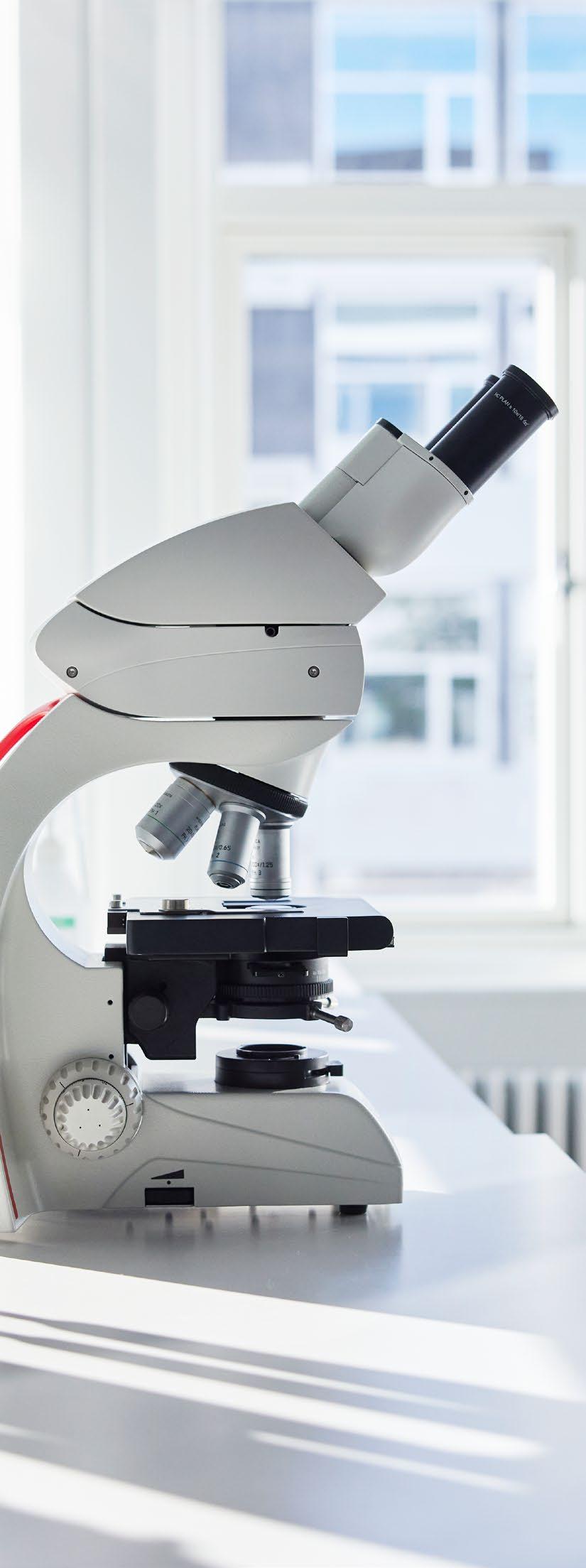
Software has become ever increasingly integrated into various applications in healthcare. One type of such integration is known as software as a medical device (SaMD) in which the software itself is used for a medical purpose without the reliance of specialized hardware to function. This allows the software solution to be deployed to market in a shorter time and more readily updated once deployed, compared to more conventional hardware or pharmacological solutions. With the confluence of artificial intelligence and machine learning (AI/ML), the SaMD market is estimated to grow 17% to $5.4 billion over the coming decade.
With respect to SaMDs, there are considerations from the Food and Drug Administration (FDA) regulation perspectives when releasing a new product to the public, as well as patenting perspectives to protect software-based inventions.

The FDA has jurisdiction to regulate digital health products that meet the definition of “device” under section 201(h) of the Federal Food, Drug, and Cosmetic Act. A “device” means that the intended use of the product is for the diagnosis of disease or other condition, or the cure, mitigation, treatment, or prevention of disease, or it is intended to affect the structure/function of the body and does not achieve its primary intended purposes through chemical action within or on the body and is not dependent upon being metabolized for the achievement of its primary intended purposes.
Jessa Boubker | jboubker@foley.com
Clara Greaney | cgreaney@foley.com
Austin Kim | akim@foley.com
Device regulation can include a number of requirements depending on whether De Novo authorization or 510(k) clearance is required. The level of risk and substantially equivalent products already on the market determine the level of regulation FDA requires for 510(k) clearance (i.e., a substantially equivalent product exists), either De-Novo Request (i.e., re-classify risk), or Pre-Market Approval (i.e., new product, must prove safety/efficacy).
Software can be used as/in medical devices but the software itself is not always classified as a medical device:
■ Software as a Medical Device (“SaMD”) = the software itself is used for a medical purpose and does not rely on hardware medical device to function.
■ Software in a Medical Device = the software is integral to the medical device.
■ Software used in the manufacture/maintenance of a medical device.
SaMD is regulated using a risk framework. These risk levels include:
■ General wellness devices – technically do not meet the definition of “device” because of a legislative carve out in the definition (e.g., diet/fitness apps).
■ Low risk devices – enforcement discretion (e.g., apps that use coaching/prompting for selfmanaging a disease).
■ High-risk devices – subject to FDA regulation. These devices often use built-in features to perform medical device functions (e.g., sensors/ microphones on an iPhone) or perform patientspecific analysis for diagnosis/treatment.
Key considerations when evaluating whether a device poses a high risk to users and thus subject to FDA regulation should include: (1) whether the software makes treatment claims, (2) the urgency of the treatment (e.g., a suicide risk), or (3) whether the software is intended to replace in-person or telehealth treatment sessions.
FDA’s traditional approach for the regulation of hardware-based medical devices is not well suited for the faster, iterative design and development, and type of validation used for software device functions, including SaMD. Traditionally, SaMD manufacturers must maintain a level of control to manage changes to software and must perform risk assessments for every change to determine whether it affects the functionality or risk category before releasing the change. That is, the software is essentially locked and cannot change while out in the market. Under the traditional paradigm, changes to AI/ML software would need to undergo a premarket review each time (e.g., 510(k) guidance requires a premarket submission for modifications that introduce a new risk, change risk controls, or significantly affect clinical functionality).
AI/ML software in general can use either locked or continuously learning algorithms: locked algorithms yield the same results every time the same input is applied; and continuously learning algorithms adapt over time via real-world experience. Continuously learning algorithms can yield different outputs with the same set of inputs as the algorithm changes. This is the benefit of AI—it can optimize performance over time. With a continuously learning algorithm, it would be difficult (maybe impossible) for a manufacturer to stop and submit a premarket review for any change.
On April 2, 2019, the FDA published a discussion paper titled “Proposed Regulatory Framework for AI/ ML SaMD.” See FDA, Proposed Regulatory Framework (April 2019). The discussion paper built off on a prior
guidance titled “Deciding When to Submit a 510(k) for a Software Change to an Existing Device” (October 25, 2017), and suggested a monitoring software from its premarket development to its post market performance. The FDA proposed a “Total Product Life Cycle” approach. The program primarily focuses on the organization creating the software and monitors real-world performance. The Total Product Life Cycle approach focuses on how an organization implements good machine learning practices.
The Total Product Life Cycle approach requires manufacturers to envision a “predetermined change control plan” for premarket submissions, which requires manufacturers to outline:
■ Anticipated modifications (“software as a medical device pre-specifications”) and
■ The methodology to implement those changes in a controlled manner that manages risks to patients (“Algorithm Change Protocol”).
The FDA expects manufacturers to commit to transparency and real-world performance monitoring, and to periodically update FDA on changes implemented as part of the approved pre-specifications and algorithm change protocol.
The FDA appears to be committed to adapting its regulatory framework to new AI/ML-based SaMD. In January 2021, the FDA issued an Action Plan after receiving feedback on the 2019 discussion paper. See FDA, AI/ML-Based SaMD Action Plan (Jan. 2019). The Action Plan envisions that particular types of modifications of SaMD will trigger a premarket or focused FDA review: namely, those outside the agreed upon “SaMD Pre-Specifications (SPS)” (based on retraining or updating the associated methodology) and “Algorithm Change Protocol (ACP)” (changes in a controlled manner to manage risk to patients).
Subsequently, in October 2021, the FDA issued ten guiding principles for Good Machine Learning Practices, which highlight the importance of integrated workflows, address algorithm bias, and require good software engineering and safety practices. See FDA, Good Machine Learning Practice for Medical Device Development: Guiding Principles (Oct. 2021).
Although no draft guidance on the Predetermined Change Control Plan has been issued, the FDA has approved, authorized, or cleared at least 343 AI/ ML devices and some of these manufacturers have used the Predetermined Change Control Plan. Stakeholders are hoping the draft guidance clarifies the types of modifications that should fall under the Predetermined Change Control Plan. In the interim, manufacturers and developers can make good faith compliance efforts by demonstrating the SaMD abide by the Guiding Principles to ensure the SaMD product remains safe, effective, and high quality.
In addition to FDA regulatory submissions, companies seeking to release their AI/ML-based SaMD products to the product should also pursue patent protection to cover their innovations.
When preparing patent applications on AI/ML-based inventions, there are a myriad of challenges to keep in mind to satisfy requirements of patentability. First, the claimed invention must be directed to patent eligible subject matter. Within the realm of software-based inventions, this can be shown by providing description – preferably within the application itself – as to how the particular components or steps particularly improve a computer or another technological field. This is to differentiate from simply employing convention computer components to carry out or “apply” the idea.
Second, the patent application must describe an invention with adequate detail so that a person skilled in the art can recognize the boundaries of the invention and can be enabled to practice the invention. Computer-implemented inventions are described in terms of functionality or the end result to be achieved, oftentimes framed in terms of modular components or black boxes. With SaMD inventions, adequate details should be provided in all relevant aspects, including the training dataset, the architecture of the model itself, the precise methodology of training the model (including the specific inputs and outputs), the pre-processing steps for new data, or the application of the model.
Third, when the SaMD invention relates to a method of treatment as opposed to the algorithm itself, whether the invention itself and its purported therapeutic
effects are enabled by the disclosure of the patent application may be subject to additional scrutiny. While the invention does not need to be reduced to practiced prior to filing, the lack of examples –whether prophetic or working – may be considered in whether the method of treatment is indeed enabled. A prophetic example describes future and anticipated results of an experiment that have yet to be performed. In contrast, a working example refer to actually conducted experiments yielding real results. Care should be taken in incorporating such examples into the description of the invention in the patent application, when the invention is directed to a method of treatment.
In conjunction with the preparation of the patent application itself, one other consideration is coordinating the patenting process with the FDA regulatory framework, especially in view of developments to the SaMD product. Under the FDA regulation and guidance, certain types of modifications or improvements to the SaMD are required to be submitted for FDA review. For instance, modifications to the SaMD within the bounds of SPS or ACP are subject to documentation, while improvements beyond the bounds of SPS or ACP and lead to a new intended use would be subject to a new premarket submission.
A company involved in SaMD development should balance between FDA regulation submissions and patent filings. For example, if these modifications although not implemented in the end product can be foreseen ahead of filing, these embodiments should be described in the patent application in detail. On the other hand, new changes beyond those described in the company’s patent portfolio and outside the bounds of the agreed upon SPS or ACP may warrant the filing of a new patent application on the improvement. If the changes warrant FDA regulatory review (e.g., high-risk devices), patent term is another factor to consider.
As regulations change to keep up with the pace of technological progress, those interested in releasing SaMD products should keep a keen eye out for potential legal issues.
Foley & Lardner LLP is a preeminent law firm that stands at the nexus of the energy, health care and life sciences, innovative technology, and manufacturing sectors. We look beyond the law to focus on the constantly evolving demands facing our clients and act as trusted business advisors to deliver creative, practical, and effective solutions. Our 1,100 lawyers across 25 offices worldwide partner on the full range of engagements from corporate counsel to IP work and litigation support, providing our clients with a one-team solution to all their needs. For nearly two centuries, Foley has maintained its commitment to the highest level of innovative legal services and to the stewardship of our people, firm, clients, and the communities we serve.